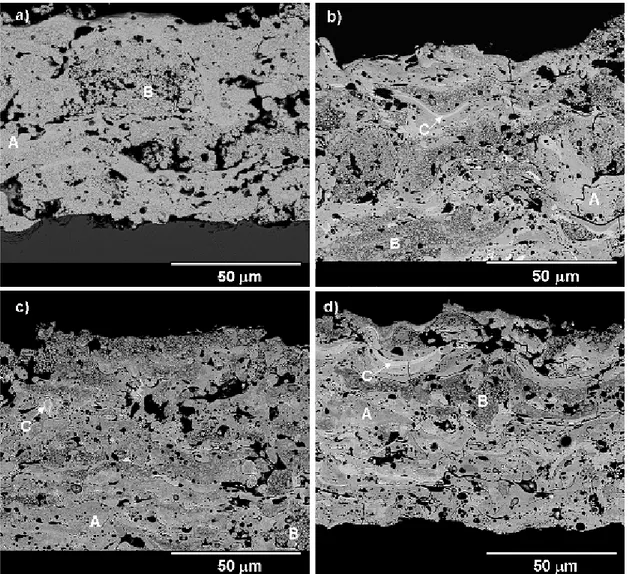Characterization of nanostructured ceramic and cermet coatings deposited by plasma spraying
Texto completo
Figure

![Figure 1. Coating formation by thermal spraying [6].](https://thumb-us.123doks.com/thumbv2/123dok_es/3302670.595944/20.892.133.766.314.779/figure-coating-formation-thermal-spraying.webp)


Documento similar
Wear test for NiCoCrAlY specimens has shown smaller weight losses and lower friction coefficient under high temperature, meanwhile CoNiCrAlY coating shows a unexpected ware rate
Therefore, in the present study, the formation of the PIL boundary layer on AISI316L stainless steel under static conditions is described in order to prevent or reduce the
On the other hand at Alalakh Level VII and at Mari, which are the sites in the Semitic world with the closest affinities to Minoan Crete, the language used was Old Babylonian,
The as-prepared CZTS powder was deposited as ink using Doctor Blade technique onto ceramic tile, as a substrate substituting the typical soda-lime glass.. The as-prepared film
The quality of the contacts deposited by electroless deposition depends strongly on parameters such as: the work function, the number of valence electrons of the elements, time
Figure 2 shows the thickness variation with the anneal- ing temperature of several samples deposited with a flow ratio of 4 and microwave powers between 500 and 1500 W As can be
Moreover, it has been observed that the ultrathin B-C-N layers grown on titanium oxide layer act as transparent electrodes with high conductivity for the photogenerated charge
On the other hand, placing the biased Mo mesh between the CH 4 distribution ring and the substrate holder leads to even lower metal contents in the deposited coatings due to the


